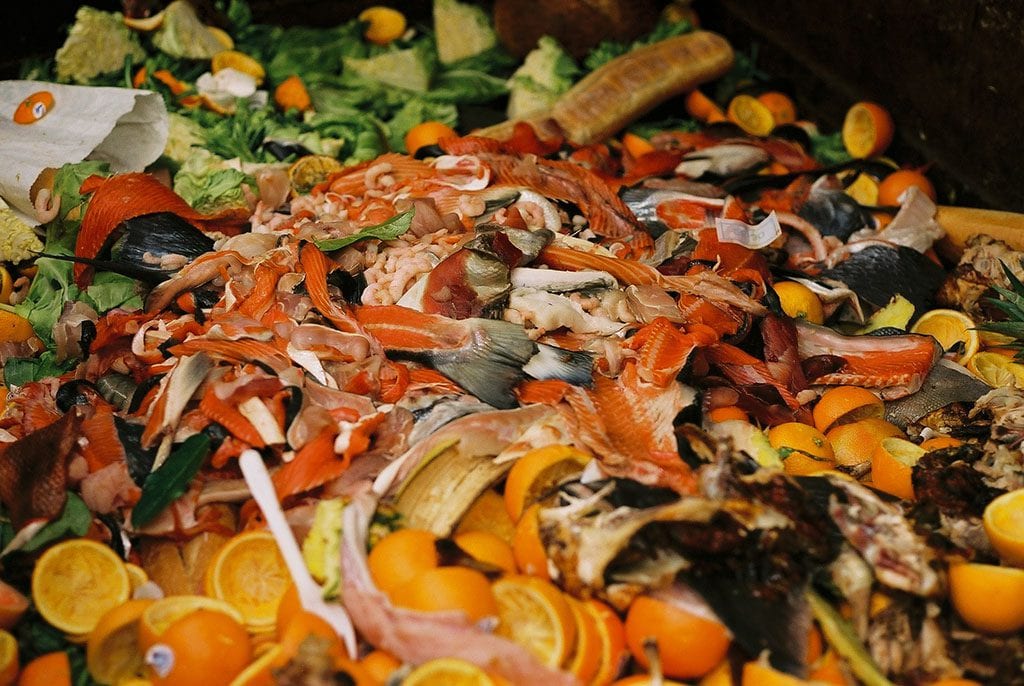
Editor: Vladimir Bajic | Tactical Investor
Americas Wasted Food – A Call for Action
Updated Dec 2023
In the United States, the issue of food waste has reached alarming proportions. A staggering 30-40% of the food supply is estimated to go uneaten each year. This translates to approximately 133 billion pounds of food, or $161 billion worth, being discarded annually. To visualize this, imagine filling 320,000 jumbo jets with food and dumping them directly into the landfill each year.
This issue is not just about the sheer volume of wasted food but also about the missed opportunities and the significant impact on our environment and society. The discarded food could have been used to feed millions of Americans who face food insecurity. Moreover, the resources used in producing, processing, transporting, and disposing of this food, including land, water, labour, and energy, are also wasted.
Food waste occurs at all stages of the food supply chain, from the farm to the consumer’s table. It can be due to problems during drying, milling, transporting, or processing that expose food to damage by insects, rodents, birds, moulds, and bacteria. At the retail level, equipment malfunctions, over-ordering, and culling of blemished produce can result in food loss. Consumers also contribute to food loss when they buy or cook more than they need and choose to throw out the extras.
The environmental impact of food waste is also significant. When food is discarded, it ends up in landfills, decomposing and producing methane, a potent greenhouse gas. Moreover, the water used in the production of wasted food, which amounts to a quarter of our water supply, is also destroyed.
Despite the magnitude of the problem, only 10 per cent of edible wasted food is recovered yearly in the US. Several barriers to recovering food include liability concerns, distribution and storage logistics, and the funds needed for gleaning, collecting, packaging, and distribution.
This report aims to shed light on the issue of food waste in America, its impacts, and the opportunities for action. It calls for a concerted effort from all stakeholders, including policymakers, businesses, and consumers, to reduce food waste, recover edible food, and recycle it. By doing so, we can feed those in need, conserve our resources, and protect our environment.
The Impact of Food Waste
The consequences of food waste are extensive and multifaceted. On a human level, the wasted food represents a missed opportunity to feed the estimated 49 million Americans who are food insecure. This is particularly poignant given the rising global hunger numbers, which have reached as high as 828 million.
On an economic level, the waste signifies a significant misuse of resources. The production, processing, transportation, preparation, storage, and disposal of food all require substantial inputs of land, water, labour, energy, and other resources. When food is wasted, these resources are destroyed, too. Americans are essentially throwing out the equivalent of $161 billion each year.
The environmental impact of food waste is also profound. Food is the single largest category of material placed in municipal landfills, where it emits methane, a potent greenhouse gas. Municipal solid waste landfills are the third-largest source of human-related methane emissions in the United States, accounting for approximately 14.1 per cent of these emissions in 2017. Globally, food loss and waste represent 8% of anthropogenic greenhouse gas emissions.
Moreover, the water used in the production of wasted food, which amounts to a quarter of our water supply, is also wasted. Reducing food loss and waste by 25 per cent by 2050 would close the food gap by 12 percent, the land gap by 27 percent, and the greenhouse gas mitigation gap by 15 per cent.
In conclusion, the impact of food waste is far-reaching, affecting our society, economy, and environment. It is a pressing issue that requires immediate attention and action from all stakeholders.
Where Does Food Waste Occur?
Food waste is a pervasive issue at every stage of the supply chain, from the initial stages of farm production to the final point of consumption at our tables.
During the supply chain’s early stages, such as drying, milling, transporting, or processing, food can be exposed to various damaging factors. These include insects, rodents, birds, moulds, and bacteria, all of which can lead to significant food loss.
At the retail level, a variety of factors contribute to food waste. Equipment malfunctions, particularly in cold storage, can lead to spoilage. Over-ordering can result in excess food that cannot be sold before it spoils. The culling of imperfect produce, which is often perfectly good to eat but is discarded due to aesthetic standards, also contributes to food waste.
Finally, consumers play a significant role in food waste. Often, people buy or cook more food than they need and throw out the leftovers. This is a common issue in households, restaurants, and other food service establishments.
It’s important to note that food waste is not just about the food itself. Every time food is wasted, the water, energy, labour, and other resources that go into producing, transporting, and selling that food are also destroyed. This makes reducing food waste a critical issue for sustainability and addressing hunger and food insecurity.
Case Study: Hellmann’s Make Taste Not Waste Campaign
Hellmann’s Make Taste Not Waste campaign is a shining example of a successful initiative to combat food waste. This campaign has significantly impacted, inspiring more than 200 million people across the US, Canada, and the UK to waste less food in 2021 alone.
The campaign’s success lies in its innovative approach to raising awareness about food waste. It encourages consumers to think differently about the ingredients in their kitchen and provides them with ideas on how to use them in tasty meals. This approach helps reduce food waste and promotes creativity in the kitchen.
In 2022, Hellmann’s continued its efforts to drive awareness and make an impact on the issue of food waste during one of America’s most significant food holidays, the Super Bowl. The campaign, titled “Mayo Tackles Food Waste,” teamed up with Jerod Mayo, a former linebacker turned professional football coach, to further amplify its message.
The Make Taste Not Waste campaign also includes a behaviour change program called “Fridge Night.” This program, available in the form of an app and e-booklet, provides inspirational and practical ideas on how to use up food. The program has proven to be effective, with the campaign inspiring millions of people to make taste, not waste.
Hellmann’s commitment to reducing food waste extends beyond its campaigns. The brand has also taken steps to reduce food waste in its factories, demonstrating that it is not just talking the talk but also walking the walk.
The Role of Registered Dietitian Nutritionists (RDNs)
Registered Dietitian Nutritionists (RDNs) hold a pivotal role in the fight against food waste. As the nation’s largest food and nutrition professionals, they are uniquely positioned to educate and influence individuals and organizations on this critical issue.
One of the critical ways RDNs can help reduce food waste is through education. They can provide valuable information to consumers about portion sizes, helping people understand how much food they need and preventing over-purchasing and over-preparation. They can also offer guidance on meal planning, which can help consumers make the most of the food they buy and reduce the amount that goes uneaten. Additionally, RDNs can educate consumers on proper food storage to extend its shelf life, further reducing waste.
Beyond consumer education, RDNs can also advocate for policies that reduce food waste at the retail level. This could include supporting improved cold storage to prevent spoilage or pushing for less stringent cosmetic standards for produce. Many fruits and vegetables are wasted simply because they don’t meet specific aesthetic standards despite being perfectly good to eat.
RDNs can also play a role in expanding the understanding of food waste and its impacts. They can conduct and contribute to research, provide expert insights, and work to raise awareness of the issue among the public and policymakers alike.
The Call to Action
The issue of food waste is a pressing one with far-reaching implications for our society, economy, and environment. However, it also allows us to improve these areas significantly. By reducing, reusing, and recycling wasted food and creating an infrastructure that supports these actions across the food supply chain, we can help feed the food insecure, reduce agricultural pressures on the environment, and increase business efficiencies for those producing and selling food.
This is not a task for a single entity or sector but a collective responsibility that requires the involvement of all stakeholders, from policymakers and businesses to consumers and nutrition professionals. Governments can implement and enforce policies and regulations that promote waste reduction and circular economy practices. Companies can design longevity, repairability, and recyclability products and encourage practices such as reusing, refurbishing, and recycling products to minimize waste and resource depletion. Consumers can make simple changes in their everyday lives, such as buying only what they need, storing food properly, and using leftovers creatively.
Registered Dietitian Nutritionists (RDNs) can play a crucial role in this effort by educating consumers about portion sizes, meal planning, and the proper storage of food to extend its shelf life. They can also advocate for policies that reduce food waste at the retail level, such as improved cold storage and less stringent cosmetic standards for produce.
The Academy of Nutrition and Dietetics, as the nation’s largest group of food and nutrition professionals, is committed to advancing the practice of nutrition and dietetics and has funded this report to highlight opportunities for improving our current levels of wasted food. The Academy recognizes the critical role that RDNs can play in this effort and is committed to supporting them in their work.
Americas Wasted Food: A Missed Opportunity
In the United States, 30-40 per cent of the food supply goes to waste. According to USDA’s Economic Research Service estimates, this translates to approximately 133 billion pounds and a staggering $161 billion worth of food in 2010. This level of waste has profound implications for our society:
1. Missed Opportunity to Feed Families:
Wholesome food that could have nourished families in need ends up in landfills.
2. Resource Depletion:
The production, processing, transportation, preparation, storage, and disposal of discarded food involve significant resources like land, water, labour, and energy.
Food loss occurs for various reasons, with spoilage being a consistent issue at every production and supply chain stage. Between the farm gate and retail stages, issues during drying, milling, transporting, or processing expose food to damage by insects, rodents, birds, moulds, and bacteria.
At the retail level, equipment malfunctions, over-ordering, and the culling of blemished produce contribute to food loss. Consumers also play a role by buying or cooking more than they need and choosing to discard the excess (See Buzby et al. (2014)).
This wasteful trend is not just an environmental concern; it’s a missed opportunity to address food insecurity and use resources more efficiently. Tackling this issue requires a collective effort, from farm to consumer, to minimize waste and better use our abundance. USDA.gov
Conclusion: Americas Wasted Food
In conclusion, the issue of food waste in America is significant, but it is not insurmountable. There are numerous opportunities for improvement at all levels of the food supply chain. We can reduce waste, feed those in need, and create a more sustainable food system by taking action.
Every year, 80 million tons of food is wasted in the United States, equivalent to 149 billion meals. This is staggering, especially considering that one in six Americans lack a secure food supply. However, initiatives like Hellmann’s Make Taste Not Waste campaign and the work of Registered Dietitian Nutritionists (RDNs) show that it is possible to make a difference.
Reducing food waste is not just about saving food; it’s also about conserving the resources that go into producing that food. It’s about reducing the environmental impact of food production and waste and creating a more efficient and sustainable food system.
The Academy of Nutrition and Dietetics, as the nation’s largest group of food and nutrition professionals, is committed to advancing the practice of nutrition and dietetics and has funded this report to highlight opportunities for improving our current levels of wasted food. The Academy recognizes the critical role that RDNs can play in this effort and is committed to supporting them in their work.
In conclusion, the call to action is clear: we must all do our part to reduce food waste. Doing so can help feed those in need, conserve our resources, and protect our environment. This is a challenge and an opportunity to create a more sustainable and equitable food system.
Delve into Captivating Chronicles
Fear mongers are parasites that benefit from your fear.










